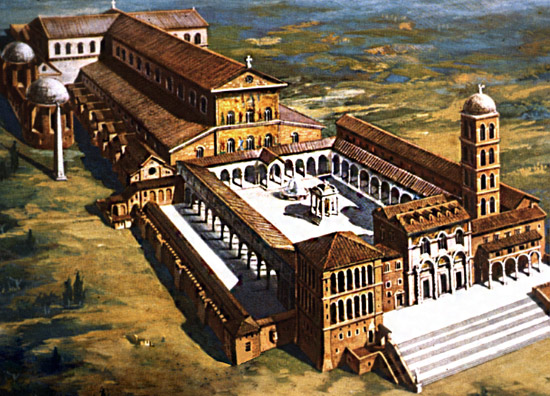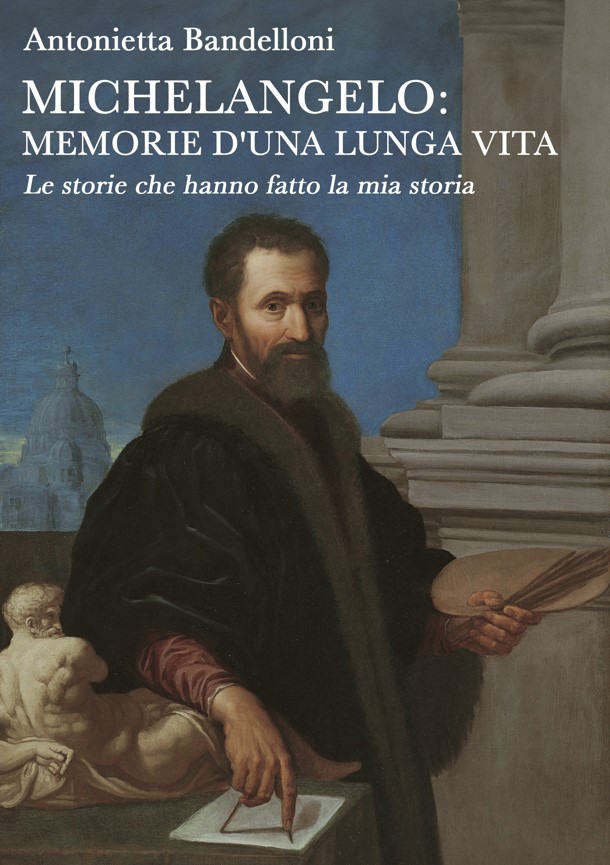La Basilica Costantiniana prima della San Pietro di oggi
La Basilica di San Pietro è conosciuta in tutto il mondo e sono migliaia le persone che ogni anno si metotno in fila per visitarla. Non tutti sanno però che prima di questa grandiosa costruzione ne esisteva un’altra che aveva alle spalle milleducento anni di storia: la basilica edificata per volere dell’imperatore Costantino.
Per secoli fu la basilica più importante esistente: il fulcro del potere della chiesa spirituale ma anche temporale. Se oggi si ha un’idea abbastanza precisa di come fosse fatta, è grazie soprattutto alle testimonianze scritte che sono arrivate fino ai nostri giorni. Tanta era la sua magnificenza che non furono pochi gli artisti che vollero riprodurla con dipinti e disegni.
La sua costruzione fu avviata non prima del 318 d.C e proseguì fino al IV secolo. nelle epoche successive fu arricchita ancora di più fino a diventare un concentrato di preziose opere d’arte.
I pellegrini giunti fino a Roma, si ritrovavano davanti una facciata con tre porte attraverso il quale si aveva acceso a un grande quadriporticato tanto suggestivo da essere chiamato “il Paradiso”. Al centro c’era la grande fontana con la pigna in bronzo di quattro metri che oggi potete vedere nel Giardino del Belvedere. Dalla pigna sgorgava l’acqua con la quale i fedeli si lavavano e purificavano prima di entrare nella basilica. La fontana era protetta da un baldacchino sorretto da otto colonne di prezioso porfido e guardata a vista da due pavoni in bronzo provenienti dal Mausoleo di Adriano. Anche gli antichi reciclavano eccome!
La Basilica Costantiniana aveva una lunghezza di 120 metri, cortile escluso, e una larghezza 46. La pianta era a cinque navate delimitate da colonne. La cosa curiosa è che tutte le colonne erano state recuperate da altri edifici e non erano tutte uguali ma addirittura erano di materiali diversi: le più vicine all’ingresso in prezioso marmo africano.
Delle tante cose che si sanno della vecchia basilica Costantiniana, abbattuta per far posto alla nuova San Pietro, è noto che fosse aperta notte e giorno per i fedeli. Di giorno la luce arrivava all’interno dalle 72 finestre mentre con il calare del sole venivano gradualmente accesi gli oltre cinquecento lumi.
Perché si decise di radere al suolo questa basilica con 1200 anni di storia per edificarne una nuova? Nel corso del tempo le pareti avevano cominciato a inclinarsi pericolosamente verso l’interno e non sarebbe stato semplice recuperarne la stabilità. Bisogna anche precisare che la tutela dei beni culturali ancora non esisteva e papa Giulio II preferì iniziare a pensare l’edificazione di un nuovo e grandioso San Pietro che rimanesse così legato per sempre al suo nome.
Il sempre vostro Michelangelo Buonarroti e i suoi racconti

The Constantinian Basilica before today’s St. Peter’s
The Basilica of San Pietro is known throughout the world and thousands of people line up to visit it every year. Not everyone knows, however, that before this grandiose construction there was another one that had behind it 1,000 years of history: the basilica built by the will of the emperor Constantine.
For centuries it was the most important basilica in existence: the fulcrum of the power of the spiritual but also temporal church. If today we have a fairly precise idea of how it was made, it is thanks above all to the written testimonies that have reached our days. So great was his magnificence that not a few artists wanted to reproduce it with paintings and drawings.
Its construction was started not before 318 AD and continued until the fourth century. in later times it was even more enriched to become a concentrate of precious works of art.
The pilgrims who arrived as far as Rome, found themselves in front of a facade with three doors through which one had turned to a large quadriportico so suggestive as to be called “the Paradise”. In the center was the large fountain with the four-meter bronze pine cone that you can see today in the Belvedere Garden. From the cone gushed out the water with which the faithful washed and purified themselves before entering the basilica. The fountain was protected by a canopy supported by eight columns of precious porphyry and looked at by two bronze peacocks from the Mausoleum of Hadrian. Even the anrichi recycled and how!
The Constantinian Basilica had a length of 120 meters, excluding the courtyard, and a width of 46. The plan had five naves bounded by columns. The curious thing is that all the columns had been recovered from other buildings and they were not all the same but even they were of different materials: the ones closest to the entrance in precious African marble.
Of the many things that are known about the old Constantinian basilica, demolished to make room for the new Saint Peter, it is known that it was open night and day for the faithful. During the day the light came in from the 72 windows while with the setting of the sun over five hundred lights were gradually lit.
Why did you decide to raze this basilica with 1200 years of history to build a new one? Over time the walls had begun to tilt dangerously inward and it would not have been easy to recover its stability. It should also be pointed out that the protection of cultural heritage did not exist yet and Pope Julius II preferred to start thinking about the construction of a new and grandiose Saint Peter that would remain so forever linked to his name.
Your always Michelangelo Buonarroti


Sostienici – Support Us
Se questo blog ti piace e ti appassiona, puoi aiutarci a farlo crescere sempre più sostenendoci in modo concreto condividendo i post, seguendo le pagine social e con un contributo che ci aiuta ad andare avanti con il nostro lavoro di divulgazione. . ENGLISH: If you like and are passionate about this blog, you can help us make it grow more and more by supporting us in a concrete way by sharing posts, following social pages and with a contribution that helps us to move forward with our dissemination work.
€10,00







1 commento »